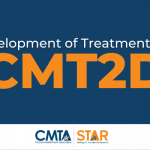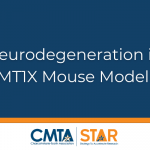- Development of Treatments for CMT2D
 Professor Robert Burgess and his team at The Jackson Laboratory in Bar Harbor, Maine, is developing both drug treatments and gene therapies for CMT2D with excellent results in mouse models of the disease. CMT2D is caused by mutations in a gene ...Read more ...
Professor Robert Burgess and his team at The Jackson Laboratory in Bar Harbor, Maine, is developing both drug treatments and gene therapies for CMT2D with excellent results in mouse models of the disease. CMT2D is caused by mutations in a gene ...Read more ... - CMTA Updates List of Neurotoxic Meds Potentially More Hazardous to CMT Patients
 The Charcot-Marie-Tooth Association (CMTA) announced the results of a review of its long-running list of medications known or suspected of being toxic to the peripheral nervous system. With two exceptions for anticancer drugs, the reviewers concluded that the vast majority ...Read more ...
The Charcot-Marie-Tooth Association (CMTA) announced the results of a review of its long-running list of medications known or suspected of being toxic to the peripheral nervous system. With two exceptions for anticancer drugs, the reviewers concluded that the vast majority ...Read more ... - A New Therapeutic Strategy for CMT2D
 Scientists at the UCL Queen Square Institute of Neurology in London have identified a new potential therapeutic strategy for CMT type 2D (CMT2D) that may be more broadly effective for treating neuropathy. CMT2D is caused by mutations in the GARS1 ...Read more ...
Scientists at the UCL Queen Square Institute of Neurology in London have identified a new potential therapeutic strategy for CMT type 2D (CMT2D) that may be more broadly effective for treating neuropathy. CMT2D is caused by mutations in the GARS1 ...Read more ... - Development of Advanced Research Diagnostic Capabilities for the CMT Community
 CMT is a genetic disease caused by distinct changes in the DNA of a patient and these are typically transmitted in families. Although over 100 different genes, each causing a CMT subtype, have already been identified, more than 50% of ...Read more ...
CMT is a genetic disease caused by distinct changes in the DNA of a patient and these are typically transmitted in families. Although over 100 different genes, each causing a CMT subtype, have already been identified, more than 50% of ...Read more ... - Studying Neurodegeneration in CMT1X Mouse Model
 In people with CMT1X cell-to-cell communication within the peripheral nervous system is affected, leading to a breakdown in nerve signals resulting in a progressive muscular atrophy (wasting or loss of muscle tissue), weakness, and loss of sensation in the limbs. ...Read more ...
In people with CMT1X cell-to-cell communication within the peripheral nervous system is affected, leading to a breakdown in nerve signals resulting in a progressive muscular atrophy (wasting or loss of muscle tissue), weakness, and loss of sensation in the limbs. ...Read more ...

Charcot–Marie–Tooth Association
Accelerating Research Empowering Patients









